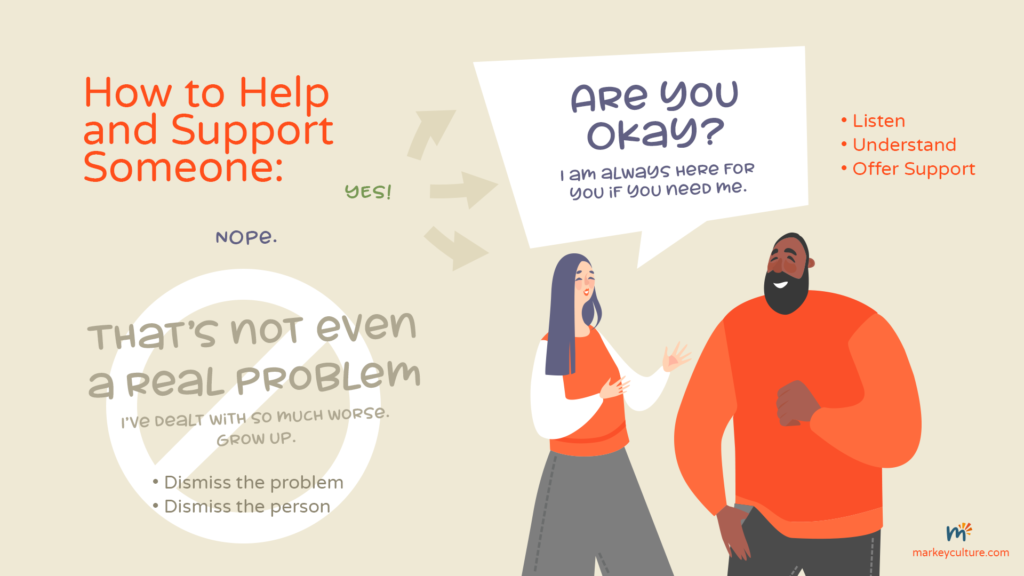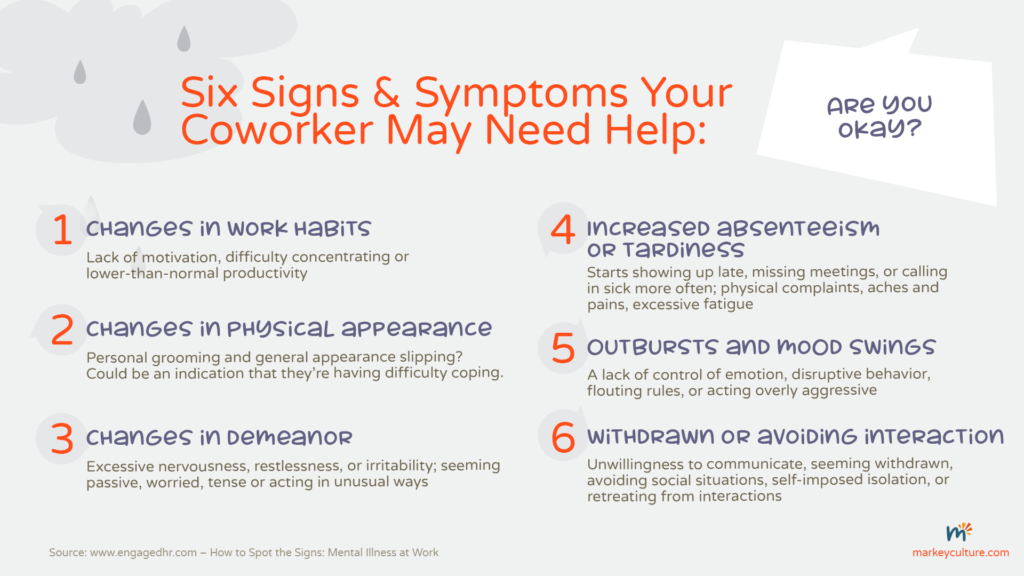
Create your account
Let's set up your account, no credit card required!
Already have one? Login here.

Let's set up your account, no credit card required!
Already have one? Login here.

Think again.
May’s ‘Mental Health Awareness’ month sprinkled conversation about trauma, anxiety, depression, suicide, asking for help, benefits of therapy, and so much more into our social media feeds. What about yours ––– did you share any of it? Or talk about it with coworkers, family or friends?
Instead of thinking “oh well, we’ll do more for it next year,” we’d like to invite you to reconsider what we can start doing TODAY to support the 1 in 4 of us who struggle with anxiety, depression, or other mental health concerns (substance abuse, PTSD, anorexia, etc.).
If you’re still thinking “so what?”, uncertain or even fearful of what these conversations could do to your business bottom line or team culture, check out these scary stats, study conclusions and/or statements about the state of mental health in our work lives:
The list could go on and on…. While these stats are startling, the impact on our work lives is real. The good news: Up to 90% of those who get help are able to significantly reduce symptoms and improve their quality of life.
This, however, requires a major shift in individual attitudes to address the societal stigma out there. For many individuals, the idea of talking about feelings, specifically the extreme of suicide, in the workplace can be even scarier –– so what’s your next, best move?
If you were feeling a physical pain for more than a few days, you’d more than likely talk about it… perhaps ask some friends or family – and eventually get heckled to get it checked out. If you had a major broken bone or other physical injury preventing you from a quality day at home or work, you wouldn’t think twice about seeing a medical professional. The same should be said for emotional/mental health struggles and pains. As with pretty much everything, the more we’re familiar with something the less scary it is. Educating oneself and each other is a critical need and a great first step.
This site truly has some amazing videos and resources. The campaign efforts shares language guides, statistics, 3 steps (or R’s) to “stamp out stigma”: Recognize, Reeducate, and Reduce, and a handy observance calendar with conversational themes to support more conversation, and ultimately greater support.
All of which brings us to acknowledging June as a month for conversation around trauma and post traumatic stress disorder.
Here are a few graphics/messages that we’d LOVE for you to share out to your teams, customers and community on your social feeds and digital signage:


As culture and team builders, we simply cannot ask our people to bring their best to work and only expect to experience their joys. Being human and vulnerable at times is what makes for the very best work, innovation, creativity, and collaboration. We can’t (and shouldn’t have to) turn off being human the moment we step into our workplaces or log on remotely. We carry these things (stresses, worries, illnesses) with us everywhere. And, that’s completely okay. Our hope is to encourage more workplaces and teams to foster & support wellbeing from all angles, and help build resilience. The steps forward, while not clearly defined or easy for teams/workplaces, lead to great results = a more productive, more committed, and more inspired work life where everyone wins.
Sources / references:
Working Well:Leading a Mentally Healthy Business, June 2016
Great Monday: How to design a company culture employees love
by Josh Levine
Stanford Graduate School of Business, Why Your Workplace Might Be Killing You